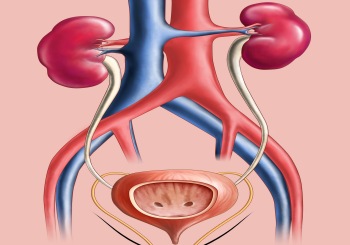Can urine flow be improved by taking Saw Palmetto? Well, we try to answer that question in this article.
Why Urination Is Important
Urination is a fundamental process by which the body removes waste products and excess fluids. Proper urination is essential for maintaining the balance of fluids and electrolytes in the body and keeping the urinary tract healthy. Men are most commonly affected by urination issues. Frequent urination problems include:
- Benign prostatic hyperplasia (BPH), which is a non-cancerous enlargement of the prostate gland
- Lower urinary tract symptoms (LUTS), which can include difficulty starting and stopping urination
- Weak urine flow
- Frequent urination
These issues can greatly impact quality of life and may be a sign of underlying health problems that require medical attention.
Why Saw Palmetto?
Saw palmetto is a small palm tree native to the southeastern United States. Its berries have a long history of use in traditional medicine, particularly among Native American populations, for a variety of ailments including urinary problems. Saw palmetto extracts are widely used today as a natural remedy for benign prostatic hyperplasia (BPH) and other urinary problems in men. Its active compounds are thought to work by inhibiting the production of the hormone dihydrotestosterone (DHT), which is responsible for prostate growth. Saw palmetto has been extensively studied for its potential benefits in improving urinary symptoms and is commonly used as a complementary therapy alongside conventional treatments for BPH and LUTS.
Is Saw Palmetto Effective?
There have been numerous studies investigating the potential effectiveness of saw palmetto in treating urinary problems, particularly BPH and LUTS. Here are some of the key findings from these studies:
- Improved urinary symptoms: Several clinical trials have reported that saw palmetto can significantly improve urinary symptoms such as weak urine flow, incomplete emptying of the bladder, and urinary frequency.
- Comparable efficacy to conventional treatments: Some studies have found that saw palmetto is just as effective as conventional treatments for BPH, such as alpha-blockers and 5-alpha-reductase inhibitors.
- Positive effects on quality of life: Saw palmetto has been shown to improve quality of life measures in men with urinary problems, including improvements in sleep, sexual function, and overall well-being.
- Safe and well-tolerated: Saw palmetto is generally considered safe and well-tolerated, with few reported side effects or drug interactions.
- Potential to reduce prostate size: While the evidence is mixed, some studies have suggested that saw palmetto may have a modest effect on reducing prostate size in men with BPH.
One 2020 study published in the Food Science Nutrition journal investigated the effect of saw palmetto on healthy Japanese men experiencing urination issues that were not receiving medications or treatment for their problems. The men, aged 40–69 years, were experiencing urination issues, such as urinary urgency, increased urinary frequency, urinary incontinence, and awaken ≥2 times at night to urinate.
Effects of saw palmetto fruit extract intake on improving urination issues in Japanese men: A randomized, double blind, parallel group, placebo controlled study – Ikuya Ishii, Tatsuya Wada, and Tsuyoshi Takara – Food Sci Nutr. 2020 Aug 8
Half of the men in the study received 320mg of saw palmetto once per day while the other half received a placebo for twelve weeks. At the end of the study they concluded that the consumption of saw palmetto fruit extract capsules for 12 weeks relieved urination related subjective symptoms.
Another study, published in the journal Uro in 2021, found that the quality of the saw palmetto extract used was of particular importance when evaluating its effectiveness. The study focused on lower urinary tract symptoms (LUTS) in men as well as a lipidosterolic extract of serenoa repens.
[Serenoa Repens (Saw Palmetto) for Lower Urinary Tract Symptoms (LUTS): The Evidence for Efficacy and Safety of Lipidosterolic Extracts. Part III by Stephen B. Strum Uro, 2021]
They found that two studies conducted in the U.S. showing saw palmetto has no effect on LUTS may have been negatively influenced by the wide variation of quality in U.S. based saw palmetto products. By focusing on lipidosterolic extracts of serenoa repens (LSESr) they eliminated this quality issue and found the LSESr’s had a positive effect on LUTS sufferers.
With regard to the type of extraction method used to get the saw palmetto extract the authors stated:
“Major differences between extraction technology and composition of finished Serenoa products have been identified, and which have been stated to significantly impact the ability of the supplement to ameliorate LUTS. Research suggests that there is a “fingerprint” of saw palmetto that represents a quality standardized profile. A key element of this quality standardized profile is the ratio and content of fatty acids, which can vary dramatically across products. Both the EU monograph and USP standards established the minimum level of total fatty acids (TFA) that are needed for a quality Serenoa repens extract… The USP stated the chemical profile for a quality Serenoa repens extract would have a minimum of 80% total fatty acids and have a fatty acid composition of oleic acid (30–35%), lauric acid (26–32%), myristic acid (10–12%), palmitic acid (8.5–9.2%), and linoleic acid (4.3–6.0%). This fatty acid profile distinguishes quality saw palmetto extracts from vegetable oils, adulterated products, and dried saw palmetto berry powders that are deficient in fatty acid amount and/or composition. Key issues remain whether or not the content of total vs. free fatty acids (FFA) of LSESr correlates with efficacy in treating LUTS or does a particular fatty acid account for LSESr activity, and also, whether or not one extraction process is better than another.“
The extraction method isn’t what is most important. It is the fatty acid profile that seems to make a significant difference in efficacy.
What were the authors conclusions?
“In this clinician’s perspective, based upon nearly 40 years of clinical data, some conclusions are clear. First, LSESr has a definite role in the treatment of LUTS. It has a high safety profile with relatively few adverse side effects. It does not cause sexual dysfunction such as ejaculatory disorders seen with 5α-reductase inhibitors, nor hypotension with some α-blockers such as tamsulosin (Flomax®). LSESr does not alter PSA expression and therefore, does not interfere with the monitoring of men at risk of developing prostate cancer. LSESr using hexane, ethanol, or carbon dioxide extraction have all shown efficacy in published studies. The onset of action may be as early as two weeks but is clearly established by 3 months. Of importance is the durability of efficacy seen with long-term treatment of LUTS with LSESr. Of greater significance is the finding of slowing and even halting the progression of LUTS/BPH during prolonged studies using LSESr, with some trials extending 10 to 15 years.“
He also feels that “the most critical issue in the use of Serenoa repens in treating LUTS is the need to educate physicians that crude herbal products are never to be equated with standardized LSESr products that have a profile established by the EMA or USP and that the former products have no role to play in LUTS treatment.”
Bottom line is that in the above authors opinion saw palmetto, in the right form, can be effective at reducing issues related to LUTS. So, one has to be very careful when selecting what saw palmetto product to use.
Overall, while the evidence for saw palmetto’s effectiveness in treating urinary problems is not definitive, it does suggest that saw palmetto may be a safe and effective complementary therapy for men with BPH and LUTS. However, more research is needed to fully understand the mechanisms of action and optimal dosing strategies for saw palmetto.
Is Saw Palmetto Safe?
Compared to conventional treatments, saw palmetto is generally considered to have fewer side effects and a better safety profile. Additionally, saw palmetto is a natural remedy and may be preferred by some individuals who prefer to avoid prescription medications.
Saw palmetto is generally considered safe and well-tolerated. Common side effects are mild and can include stomach discomfort, nausea, diarrhea, and headache. However, serious adverse effects are rare and limited to isolated cases of liver damage and pancreatitis.
Saw palmetto may also interact with certain medications, such as blood thinners, hormonal therapies, and some antibiotics. Therefore, it is important to consult a healthcare professional before using saw palmetto, especially if you have underlying health conditions or are taking any medications. Additionally, it is recommended to choose saw palmetto supplements that have been tested for purity and quality by a reputable third-party organization.
Alternatives to Saw Palmetto
There are several conventional treatments and herbal remedies available for urinary problems in men, including benign prostatic hyperplasia (BPH) and lower urinary tract symptoms (LUTS). Here is a comparison of saw palmetto with some of these treatments:
Alpha-blockers: Alpha-blockers are a class of medications commonly prescribed for the treatment of BPH and LUTS. They work by relaxing the muscles in the prostate and bladder, improving urine flow and reducing symptoms. While alpha-blockers can be effective, they can also cause side effects such as dizziness, low blood pressure, and sexual dysfunction.
5-alpha-reductase inhibitors: 5-alpha-reductase inhibitors are another class of medications commonly used to treat BPH. They work by blocking the production of dihydrotestosterone (DHT), a hormone that contributes to prostate growth. While these drugs can reduce prostate size and improve symptoms, they can also cause side effects such as decreased libido, erectile dysfunction, and breast tenderness.
Pygeum: Pygeum is an herbal remedy derived from the bark of the African plum tree. It is commonly used as a natural remedy for BPH and LUTS. Pygeum has been shown to improve urinary symptoms and reduce prostate size in some studies, although the evidence is mixed.
Stinging nettle: Stinging nettle is an herb that has been traditionally used to treat urinary problems. It is thought to work by reducing inflammation and improving urine flow. Some studies have shown that stinging nettle can improve urinary symptoms, although the evidence is limited.
While Saw Palmetto has been shown to be effective at improving urine flow in some cases, other herbal remedies such as pygeum and stinging nettle may also be effective for some individuals. Ultimately, the choice of treatment depends on individual circumstances and should be made in consultation with a healthcare professional.
Conclusion
There is some evidence to suggest that saw palmetto may be effective in improving urinary symptoms, particularly in men with benign prostatic hyperplasia and lower urinary tract symptoms. Some key findings from clinical trials and systematic reviews include:
- Saw palmetto may significantly improve urinary symptoms such as weak urine flow, incomplete emptying of the bladder, and urinary frequency.
- Saw palmetto may be as effective as conventional treatments for BPH, such as alpha-blockers and 5-alpha-reductase inhibitors.
- Saw palmetto may improve quality of life measures in men with urinary problems, including improvements in sleep, sexual function, and overall well-being.
- Plus, saw palmetto is generally considered safe and well-tolerated, with few reported side effects or drug interactions.
While the evidence for saw palmetto’s effectiveness is not definitive, it does suggest that saw palmetto may be a safe and effective complementary therapy for men with BPH and LUTS. However, more research is needed to fully understand the mechanisms of action and optimal dosing strategies for saw palmetto. It is important to consult a healthcare professional before using saw palmetto or any other treatments for urinary problems.


